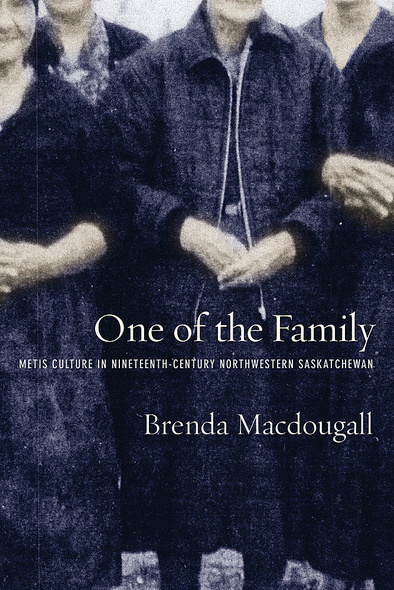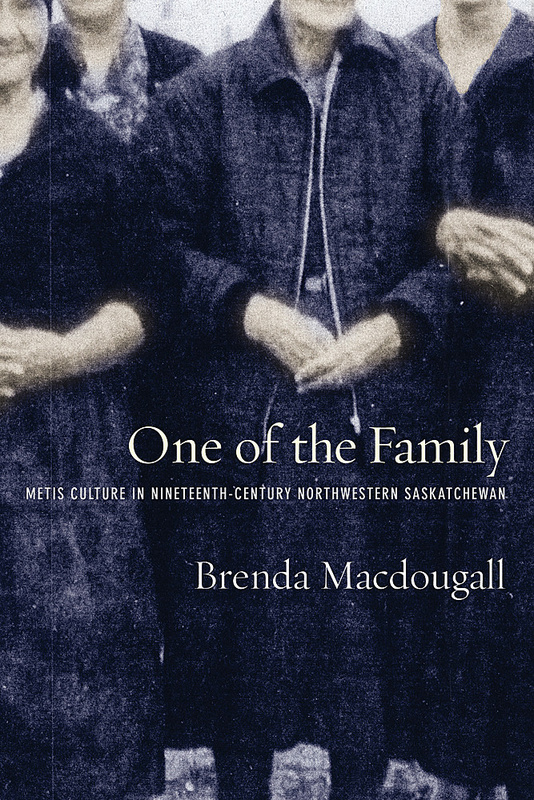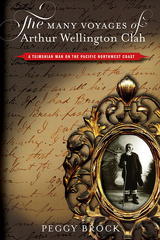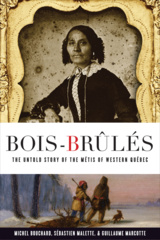
One of the Family
Metis Culture in Nineteenth-Century Northwestern Saskatchewan
In recent years there has been growing interest in the social and cultural attributes that define the Metis as both Aboriginal and a distinct people. The study of Metis identity formation has also become one of the most innovative ways to explore cultural encounters and change in North American history and anthropology.
In One of the Family, Brenda Macdougall draws on diverse written and oral sources and employs the concept of wahkootowin – the Cree term for a worldview that privileges family and values relatedness between all beings – to trace the emergence of a distinct Metis community at Île à la Crosse in northern Saskatchewan. Wahkootowin describes how relationships in the nineteenth century were supposed to work and helps to explain how the Metis negotiated with local economic and religious institutions while creating and nurturing – through marriage choices and living arrangements, adoption and the selection of godparents, economic decisions and employment – a society that emphasized family obligation and responsibility.
This path-breaking study showcases how one Metis community created a distinct identity rooted in Aboriginal values about family and shaped by the fur trade and the Roman Catholic Church. It also offers a model for future research and discussion that will appeal to anyone interested in the history of the fur trade or Metis culture and identity.
One of the Family will appeal to anyone interested in the fur trade or Metis identity and culture.
Awards
- 2011, Winner - Clio Prize for the Prairies, Canadian Historical Association
In a meticulously crafted study of the connections between the Metis families of the Sakitawak (Île à la Crosse) region of Saskatchewan, Brenda Macdougall adds richness to a familiar story by extending the focus of her study from the geographic, temporal, and cultural preeminence of Red River in historical discourse.
An impressive work that traces the emergence of the Metis community ‘as an expression of Aboriginality’ (p. 56). One of the Family emerges as a welcome and much-needed contribution to the field and should serve as a valuable framework for future research. Both captivating and rigorous, this book is sure to engage scholars interested in Aboriginal-newcomer relations and Metis identity studies
The central concept that underlies this important new book is wahkootowin, ‘a worldview linking land, family, and identity in one interconnected web of being.’ This original and richly researched work follows four generations of widely connected Metis families in the Île à la Crosse region, illuminating their lives and histories as concrete expressions of this powerful organizing principle learned from their Aboriginal mothers and grandmothers.
Acknowledgments
Note on Methodology and Sources
Note on Writing Conventions
Introduction
1 “They are strongly attached to the country of rivers, lakes, and forests”: The Social Landscapes of the Northwest
2 “The bond that connected one human being to another”: Social Construction of the Metis Family
3 “To live in the land of my Mother”: Residency and Patronymic Connections Across the Northwest
4 “After a man has tasted of the comforts of married life this living alone comes pretty tough”: Family, Acculturation, and Roman Catholicism
5 “The only men obtainable who know the country and Indians are all married”: Family, Labour, and the HBC
6 “The HalfBreeds of this place always did and always will dance”: Competition, Freemen, and Contested Spaces
7 “I Thought it advisable to furnish him”: Freemen to Free Traders in the Northwest Fur Trade
Conclusion
Appendix
Glossary
Notes
Bibliography
Index of Names
Index of Subjects








